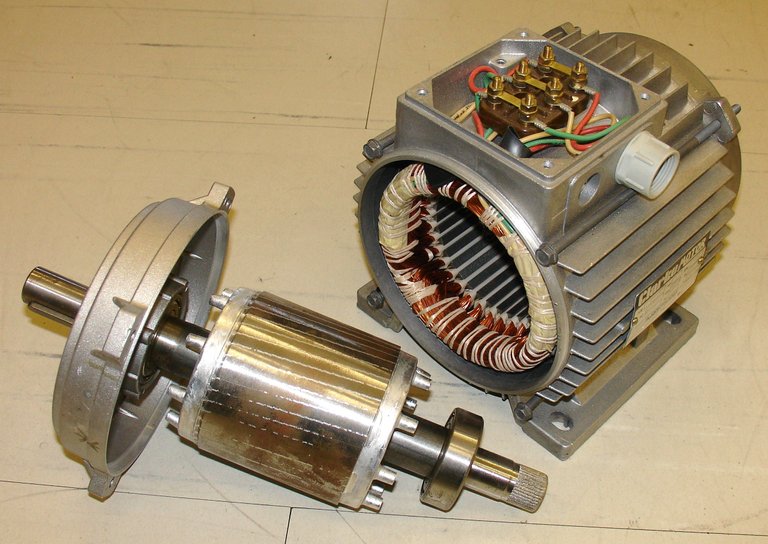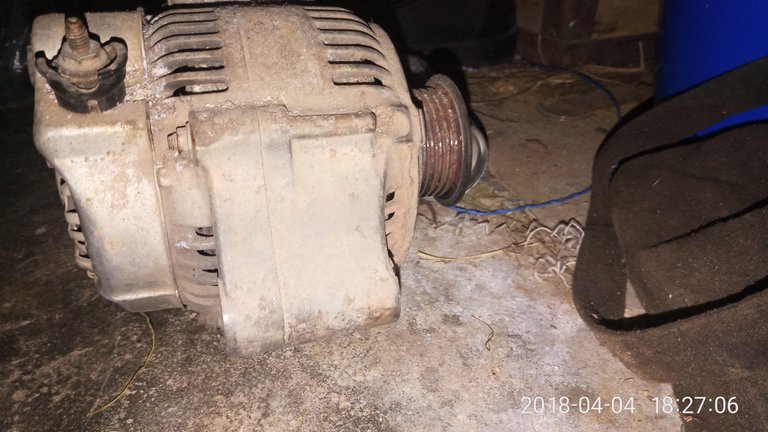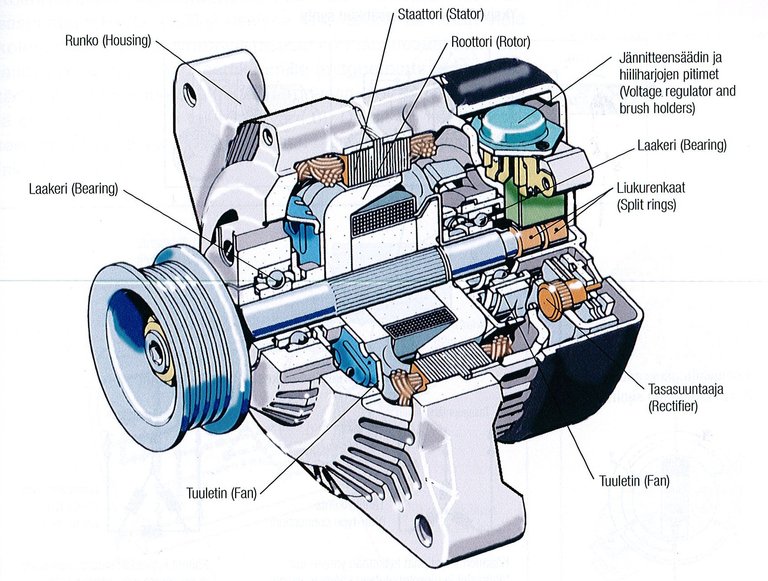This morning was a brutal one as I had planned to rush out this morning to get my to-do list done. Its been long I did some things like for example I have to visit the bank this morning to get some documents across to the customer service to have my atm card processed as soon as possible.
Due to the long Easter holiday, I had reasoned and gave it a thought that the banking hall would be so filled up ad the crowd could prevent me from getting other things done. So I planned to leave home very early and get these this done.
I got to my car only for me to start it and alas not even a sound came from it. This is definitely the battery I picked up a spanner as I opened the bonnet of the car to have a look. The battery seemed in place and was connected properly.
I gave it another trial and the same thing happened. Damn! The battery is knocked out flat (i.e. dead)
This is definitely a big problem I had just packed the car yesterday evening with no issue and all lights were very much okay as I started to think. What could have gone wrong with this vehicle that made the battery go out flat?
It wasn’t charging when I was driving home and must have drained out in the process of driving I concluded as I walked out to keep up with my to-do list. The car had Its own plans for me.
What is responsible for recharging the automobile battery after the engine has used some of it's energy to ignite the engine? Also, something must regulate the charge too this is the problem as I researched the problem, so I could call my auto mechanic.

The alternator of a generator showing its stator (round part) and stator (housing) image from Wikipedia under CCO license
Let’s talk about my car battery
My car battery is like the battery you have in your automobile, it is a 12V, 40aH rechargeable battery whose main function is to supply electric current to the motor vehicle. It provides the ignition with electric power to turn the engine. Once the engine starts then your battery becomes idle and it is being recharged by the alternator. These batteries are known as lead-acid batteries.

The alternator that charges
As you all know, the alternator is the electric part of an engine with coils and the likes. This is similar to what the alternator does in a car engine just that it regulates and supplies minimum power to the battery.
I guess you are surprised that car engine has an alternator. I was well surprised when I found out too.
The alternator consists of a stator and the rotor, the stator which is a non-moving set of wire coil windings while the rotor which is the rotational part of the alternator is a kind of electromagnet which is supplied with a small amount of electricity through the copper-carbon brushes that touch two revolving metal slip rings on its shafts. It is, therefore, the rotation of the electromagnet in the stator generates the electricity in the coil.
The electricity produced by the alternator is an alternating current type whose direction of flow changes to and fro each time the rotor rotates. It, therefore, employs the use of rectifier to make one way or direct current.
The alternator supplies electric current to all the parts of your engine (i.e. the dashboard, the brake and full lights and so many other engine parts). It is also responsible for charging the batteries after starting up the engines. Before the alternators came, dynamos were being used to charge the car batteries, but they were less efficient and low at engine speeds they were also found to weigh more than the alternator making them heavier.
Did you know the, alternator is responsible for the spark ignition of the spark plug? It supplies current to the sparkplug which causes the spark which in turn ignites the air fuel mixture.
The alternator is connected to the car engine using belt drive (you can read more about belt drives here), which is turned or pulled relative to the motion of the engine so as soon as your engine functions then your alternator should come up and should power everything connected to it. if it does not contact your automobile mechanic.

How does the alternator work?
The alternator like I stated earlier is composed of two component just like the normal internal combustion engine alternator which is stator and rotor. The stator is always mounted to the housing of the alternator and remains stationary while the rotor is the rotating part of the engine connected to the alternator pulley.
The alternator stationary part called the stator, has three sets of wires that has so many loops each which are evenly distributed to form a three-phase system. The wires are usually connected to a rectifier.
The alternator rotor contains a magnet which moves close to the many wires which are wound on the stator. The magnets on these rotors are electromagnets (permanent magnets). This way the voltage produced by the alternator is regulated by controlling the amount of current that is being created in the magnetic field by the rotor. This way the automobile circuits is being protected from excessive voltage
The two poles of the magnet (i.e. the north and south pole) which are arranged so there are alternating north and south poles which are evenly distributed outside of the rotor.
Therefore, when the rotor spins by the connection through the belt drives current is being developed by the rotor through a pair of brushes that makes contact with the two slip rings on the rotor that this causes the rotor to be magnetized. When the north and south poles of the magnets which are alternating both spins past the three sets of wire loops in the stator they produce a constantly reversing voltage in the stator. This current produced in the stator is an alternating current.
This alternating current generated in the stator is then converted to direct current using diodes (rectifiers) which are used to power all light components and recharge the battery.

How is voltage regulated?
you wonder how this voltage generated is regulated so your car alternator doesn’t blow your lights away? This is the function of the voltage regulator, it is basically what it does.
The voltage regulator is sometimes mounted outside the alternator in some engines while in other type of engines it is inside the alternator. Its main job is to control the field current applied to the moving rotor in the alternator. It monitors and regulate the voltage induced, and when there is any drop in voltage the regulator will apply current to the field thereby making the alternator to start charging. This effect is reversed in the case of overcharging it stops the battery from getting damaged. This is exactly how the voltage regulator operates in vehicles.

Applications of alternators
There are several applications of alternators which are mostly used in power generation. From automobile to industrial applications and several field applications too. They supply the electrical energy we need to survive. Well, for those of us who use internal combustion engines or hydro plants in our homes.

Conclusion
The alternator is one hell of a device in a car engine which is essential in the vehicle (pardon my language). It is responsible for powering all electrical devices in the car from your brake light to the full light and it does so through it's two main components which are the stator and rotor. The stator is the motionless part has current induced by the magnetic motion part of the rotor while the rotor has a permanent magnet with alternating north and south poles which rotate inside the stator to produce an alternating current which is then converted to direct current using the rectifiers or diodes.
The alternator is being pulled using a belt drive which is connected to the car engine.
The voltage regulator which may be inside or outside of the alternator is then responsible for controlling the voltage supplied by the alternator to prevent damage to any device including your car battery.
The alternator was an upgrade from dynamos which were heavier and less efficient (would you like your car big or sleek?).
I had to call my auto mechanic to have a look at the alternator and the battery, although the light indicating a stop in battery charge must have come on. I guess I am a bad driver as i did not notice. He checked out both and had to bring down the alternator while he used a battery charger to charge the battery. Turns out my alternator is bad and was brought out of the car engine. he had a examine it properly.

References
For further reading or knowledge please get the book and the links;
1|2|3|4|
B.L. Theraja (Author of A Text Book of Electrical Technology)
I would like to appreciate @tormiwah for his help in making this post.
If you write STEM (Science, Technology, Engineering, and Mathematics) related posts, consider joining #steemSTEM on steemit chat or discord here. If you are from Nigeria, you may want to include the #stemng tag in your post. You can visit this blog by @stemng for more details.



And just think before the application of the ignition system by Charles Kettering into the automobile we had to really crank the car.
Really??.. Well am not quite surprised some engines are still being cranked to get them ignited.
I am referring to the only crank that you had to place into the front of the car and you had to manually turn the engine over.
see here
Yes i get what you mean.. There are some diesel engines used for power generation that are still being ignited this way. That was what i meant. Nice video by the way.
Thanks for stopping by.
You and @rharphelle wants to turn me to an engineer
Lol... Its good to be versatile at least get little knowledge from things.
So, the alternator is like the soul of a car.
Yes it is...
Thanks for stopping by.
The alternator is one of the important parts of the automobile. Its the heart of the electrical parts of the automobile. Without the alternator, the electrical parts cannot perform (for long).
By the way, i never knew you bought a car!
Yeah it is very important... And the battery of your engine would just go dead without them.. Thanks for stopping by.
Wow! I didn't even know the alternator has so much function in a vehicle.
Thanks for sharing
Yes it has samminator.. Am glas you found this enlightening.
Alternators are vital to a vehicle especially now that cars are having more of electrical mechanisms due to automation afforded by it. Nice one sir.
Yes their importance is really felt in the vehicle. Thanks for stopping by.
Alternator
The heart of Vehicle Performance! Bad alternator experience is such a frustrating one
Good one BTW!
Yea. Thanks for stopping by.